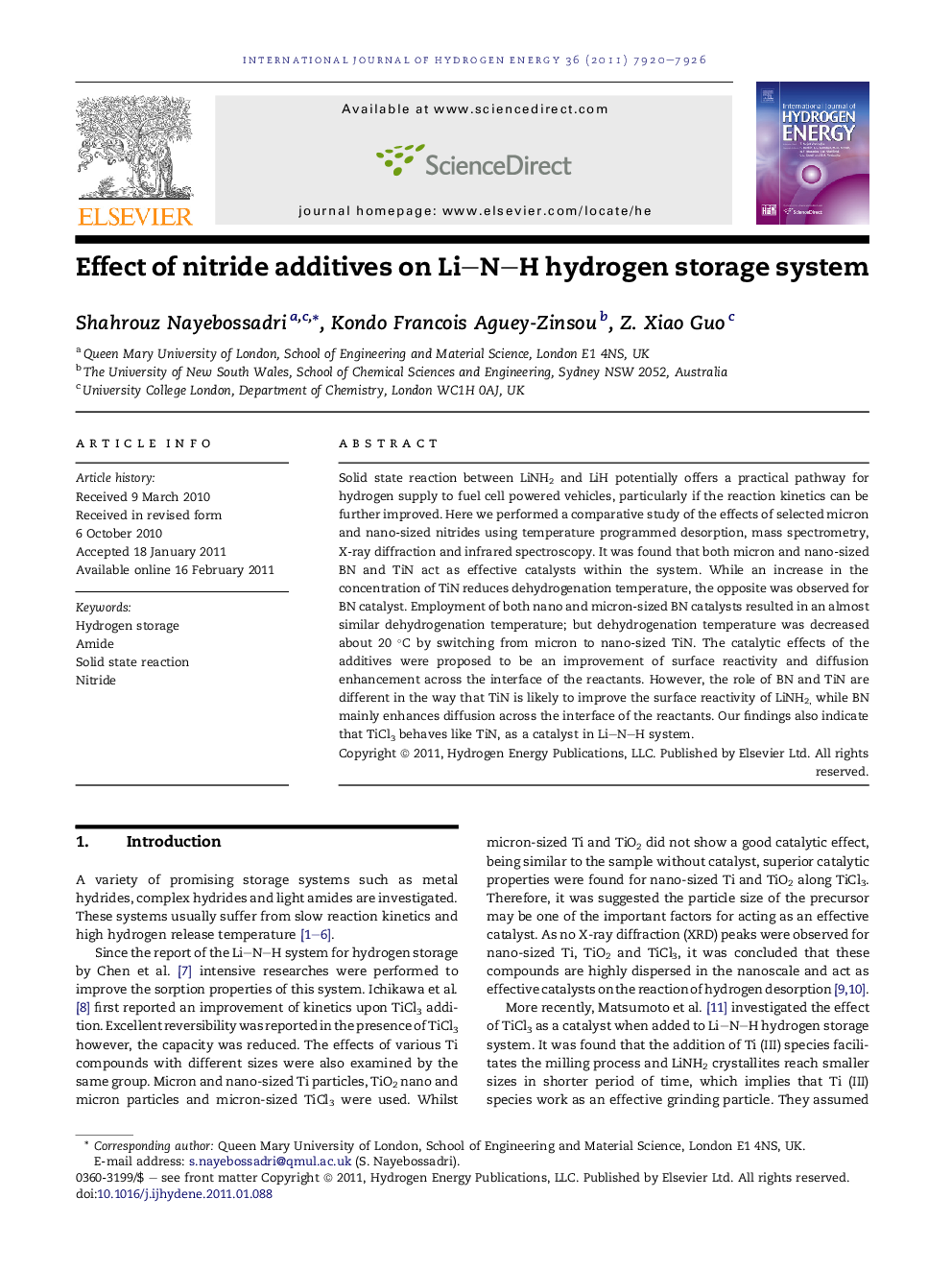| Article ID | Journal | Published Year | Pages | File Type |
|---|---|---|---|---|
| 1279330 | International Journal of Hydrogen Energy | 2011 | 7 Pages |
Abstract
Solid state reaction between LiNH2 and LiH potentially offers a practical pathway for hydrogen supply to fuel cell powered vehicles, particularly if the reaction kinetics can be further improved. Here we performed a comparative study of the effects of selected micron and nano-sized nitrides using temperature programmed desorption, mass spectrometry, X-ray diffraction and infrared spectroscopy. It was found that both micron and nano-sized BN and TiN act as effective catalysts within the system. While an increase in the concentration of TiN reduces dehydrogenation temperature, the opposite was observed for BN catalyst. Employment of both nano and micron-sized BN catalysts resulted in an almost similar dehydrogenation temperature; but dehydrogenation temperature was decreased about 20 °C by switching from micron to nano-sized TiN. The catalytic effects of the additives were proposed to be an improvement of surface reactivity and diffusion enhancement across the interface of the reactants. However, the role of BN and TiN are different in the way that TiN is likely to improve the surface reactivity of LiNH2, while BN mainly enhances diffusion across the interface of the reactants. Our findings also indicate that TiCl3 behaves like TiN, as a catalyst in Li-N-H system.
Related Topics
Physical Sciences and Engineering
Chemistry
Electrochemistry
Authors
Shahrouz Nayebossadri, Kondo Francois Aguey-Zinsou, Z. Xiao Guo,
